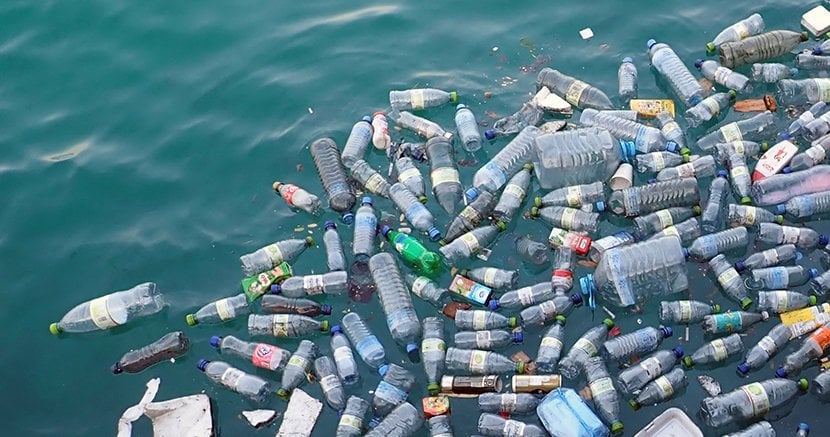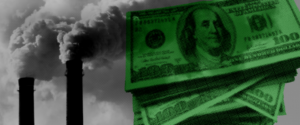We’re Literally Eating and Drinking Plastic. Fossil Fuels Are To Blame.
Published Jul 30, 2018

The plastics industry sees fracking as a huge opportunity for their profit margins. But plastic has already entered our food and water supply and our bodies — just one more reason we need to move off fossil fuels before the problem gets even worse.
Update (October 25, 2023): This week, Sen. Jeff Merkley (D-OR) and Rep. Jared Huffman (D-CA) reintroduced the Break Free From Plastic Pollution Act. This bill would be a massive first step to reducing plastic pollution and stopping the fossil fuel industry from locking us in to more oil, gas, and plastic production.
The Break Free From Plastic Pollution Act would ban many single-use, non-recyclable plastic products (like single-use carry-out bags) nationwide. It would also require makers of packaging, containers, and food service products to create waste management programs.
Help us build a safer, healthier, more sustainable future by calling on your representative to support the Break Free From Plastic Pollution Act!
Care about plastic pollution? Then it’s time to start moving away from fossil fuels.
Plastic is a serious problem, and it’s time we addressed it at its source: fossil fuel production. In the United States, plastics are increasingly fueled by fracking. This extreme method of extracting fossil fuels is polluting our air and our water and exacerbating climate change.
Fracking provides unprecedented amounts of cheap, raw materials for plastics production — “a once-in-a-generation opportunity” for the industry. More fracking equals more profit in plastics (which equals, you guessed it… more plastics.)
Now, plastic is so pervasive in our environment that we routinely digest microplastics via our food and water.
Plastic in Water, Salt… Even Beer?
Everyone drinks water, and no matter if you drink tap water or bottled water, you are very likely ingesting plastic pollution. A recent study by Orb Media tested drinking water from cities and towns around the world. Of the 159 samples, 83% contained microplastic fibers. (That means food prepared with plastic-contaminated water becomes contaminated as well.)
Bottled water samples fared even worse than tap water —unsurprising, since those bottles are made of plastic. Another study by Orb Media found 90% of bottled water analyzed from around the world contained plastic microfibers.
A single bottle of Nestlé Pure Life had up to 10,000 pieces of microplastics per liter. The plastic used to make bottle caps was the most common type of microplastic found in bottled water.
In response to the mounting evidence that plastic is in our drinking water, the World Health Organization is now investigating.
Additionally, researchers have found plastic in sea salt, thanks to the ubiquity of single-use plastics such as water bottles. These single-use plastics comprise the majority of plastic waste.
In 2015, about 70% of plastic water bottles went unrecycled. Much of that plastic waste ends up in landfills, incinerators or in — you guessed it — our oceans and seas. Plastic has also been found in seafood, beer, honey and sugar.
We need more research on the extent of microplastic pollution and the best ways to treat water to remove it. It’s also clear that we need to upgrade water treatment plant infrastructure so it can handle this new pollutant. But the best way to address this pollution is at the source by reducing plastic waste in the environment.
Fracking in the U.S. Promotes a Global Plastics Bonanza
Fracking, which causes many public health problems and harms our air, water, and climate, is now powering a dangerous plastics bonanza.
The country’s rapid fracking boom led to a gas glut. That in turn drove gas prices to the lowest levels in decades. The plastic industry came to the rescue of the oil and gas industry: it created a lucrative market for low-cost ethane, a byproduct of fracking.
Now, both plastic and ethane are being exported across the globe. More than half of the raw plastic produced in the U.S. is headed to distant shores. For instance, the chemical giant Ineos, based in the United Kingdom, is receiving ethane to help fuel European plastic factories.
The controversial Mariner East pipeline system delivers this gas byproduct to the Marcus Hook export terminal in Pennsylvania. Then, massive “dragon ships” carry it across the Atlantic to Ineos’ facilities in Grangemouth, Scotland and Rafnes, Norway.
What represents an “opportunity” for the plastics, oil, and gas industries means adverse health effects and climate catastrophe for all of us. To learn more about the toxic relationship between the plastics and fracking industries, read our fact sheet, and spread the word: we can’t tackle plastic pollution without moving off fossil fuels.
Help us fight Big Oil’s plastic-palooza. Tell your Congressmembers to support the Break Free From Plastic Pollution Act!
Enjoyed this article?
Sign up for updates.
TO TOP





